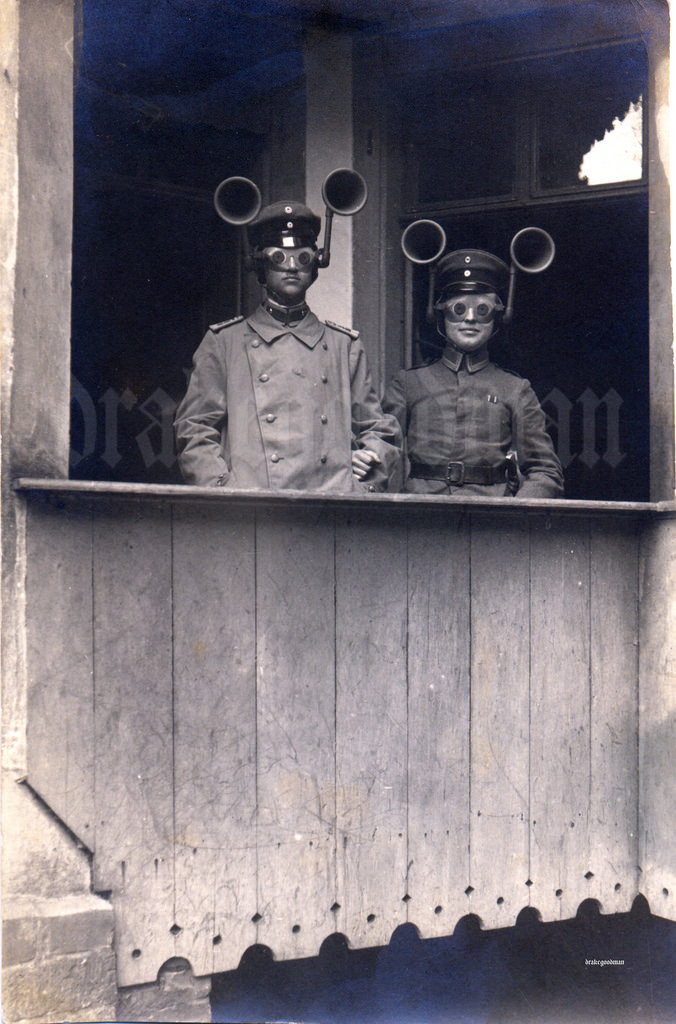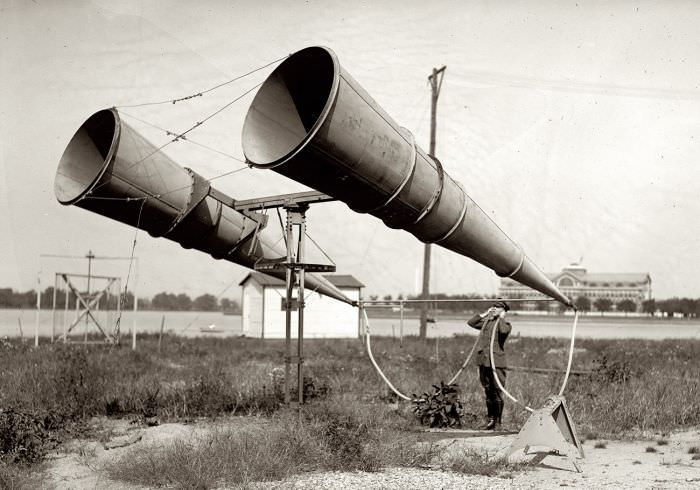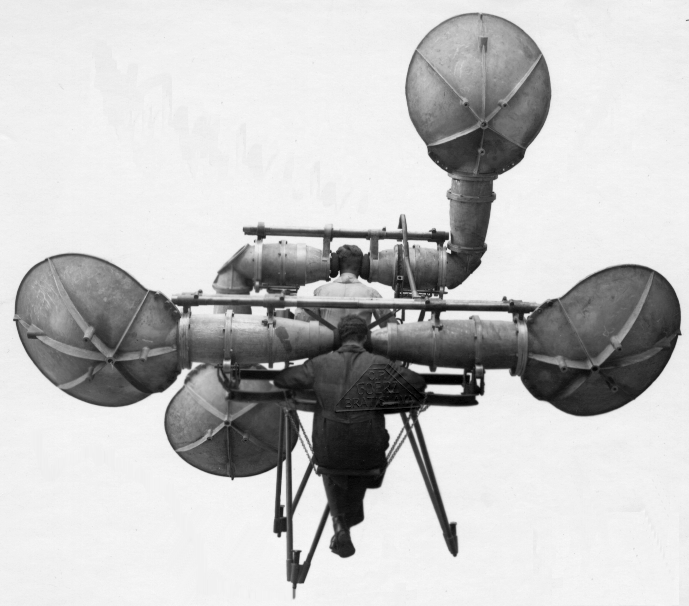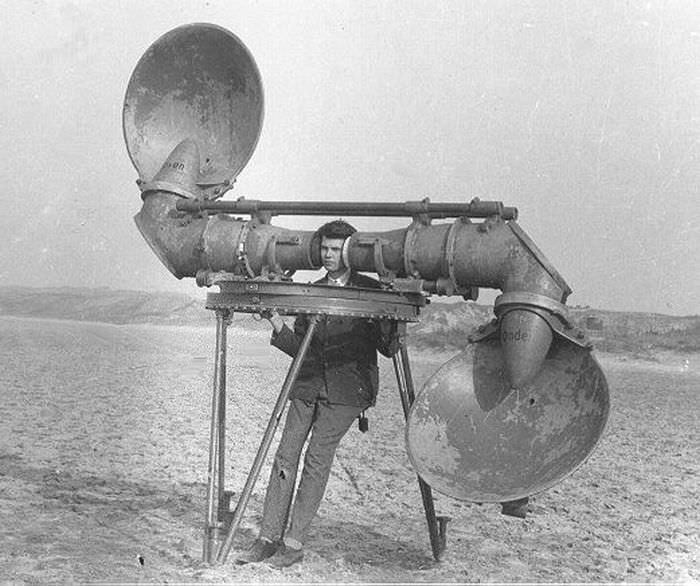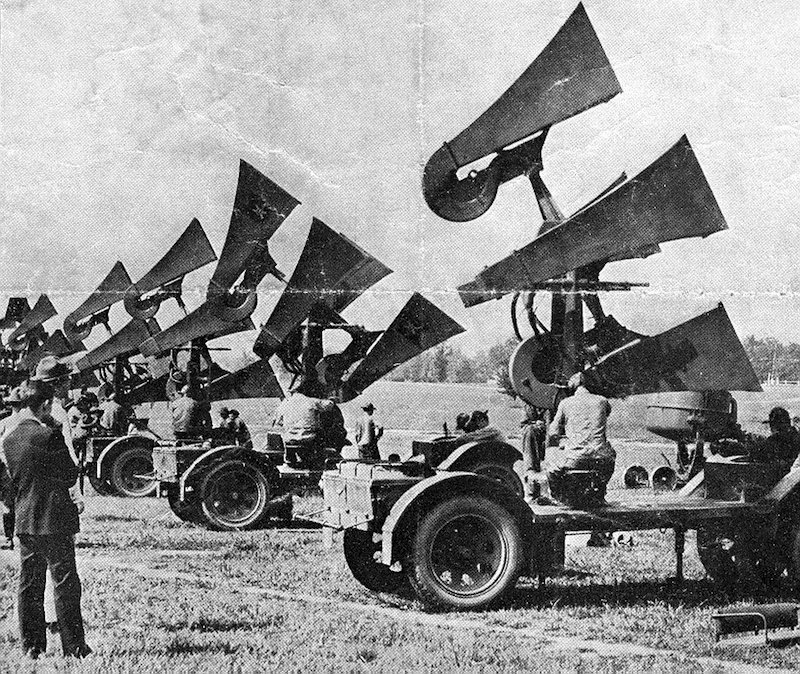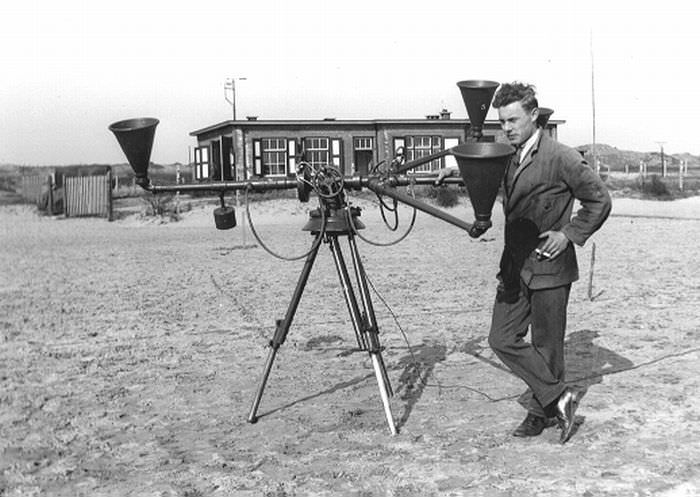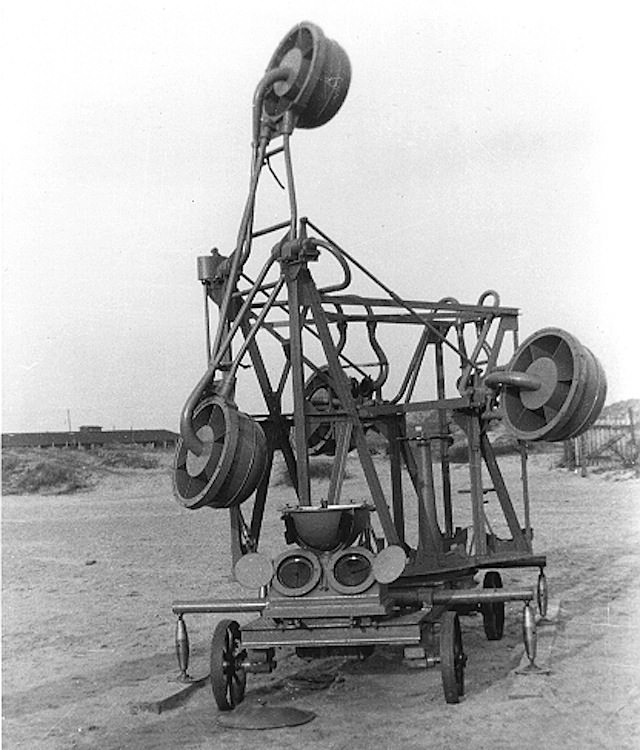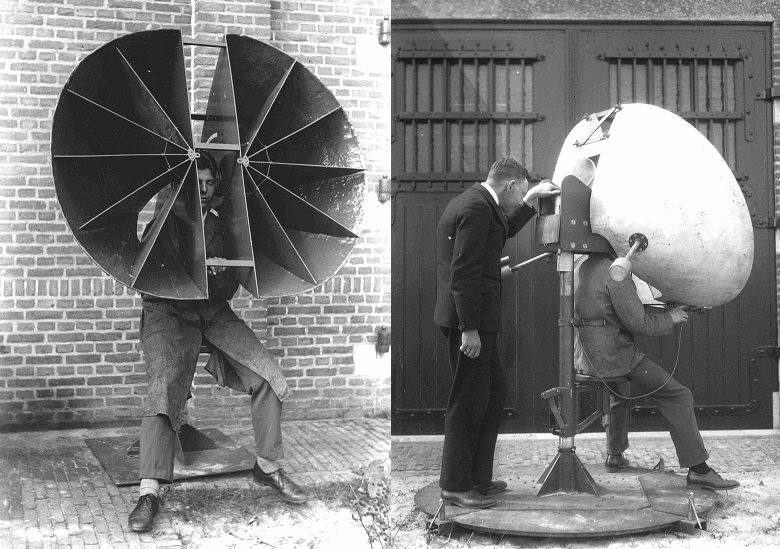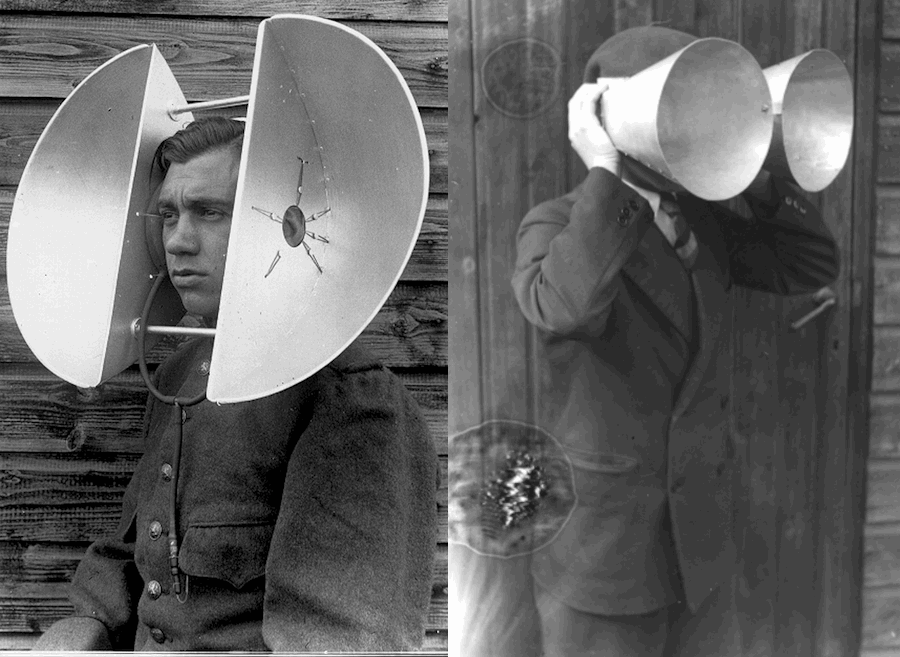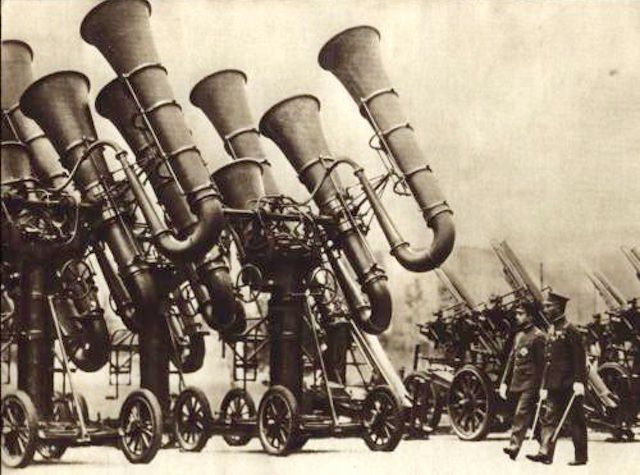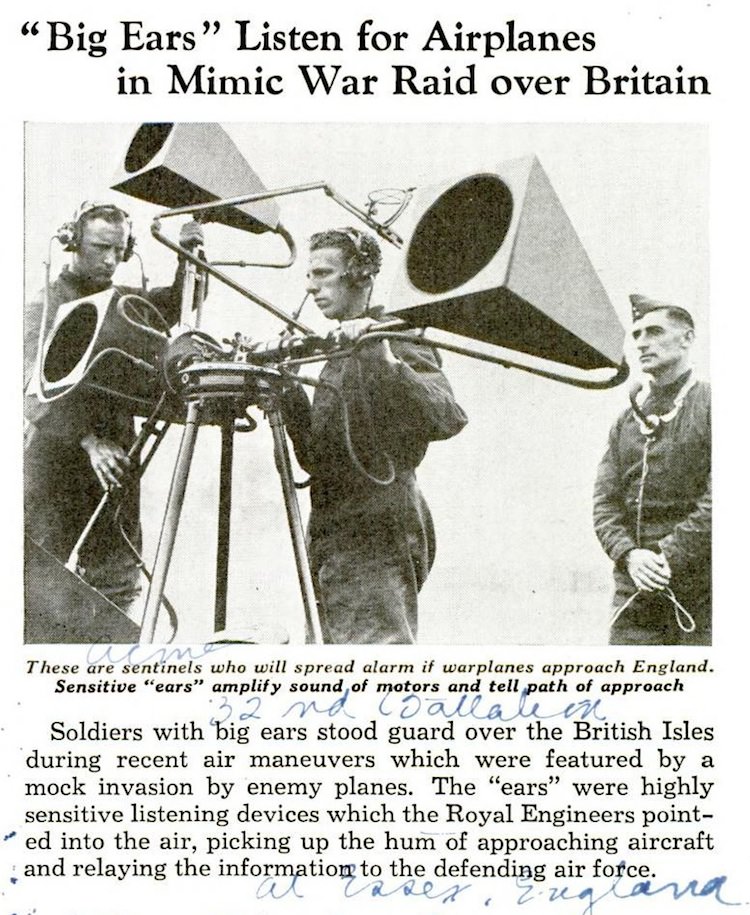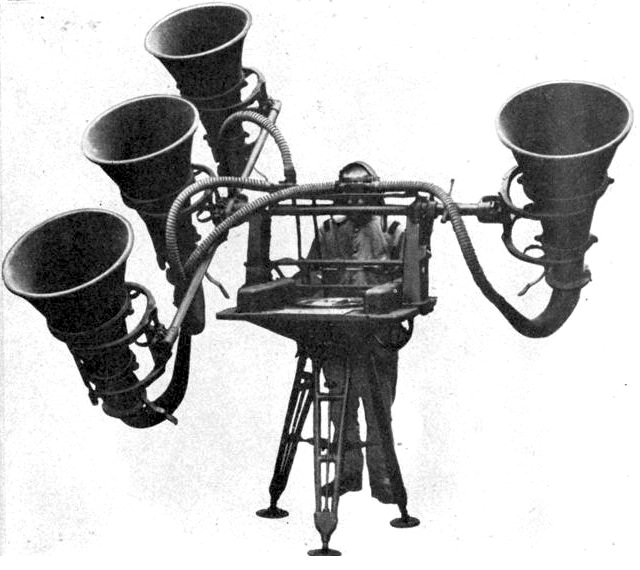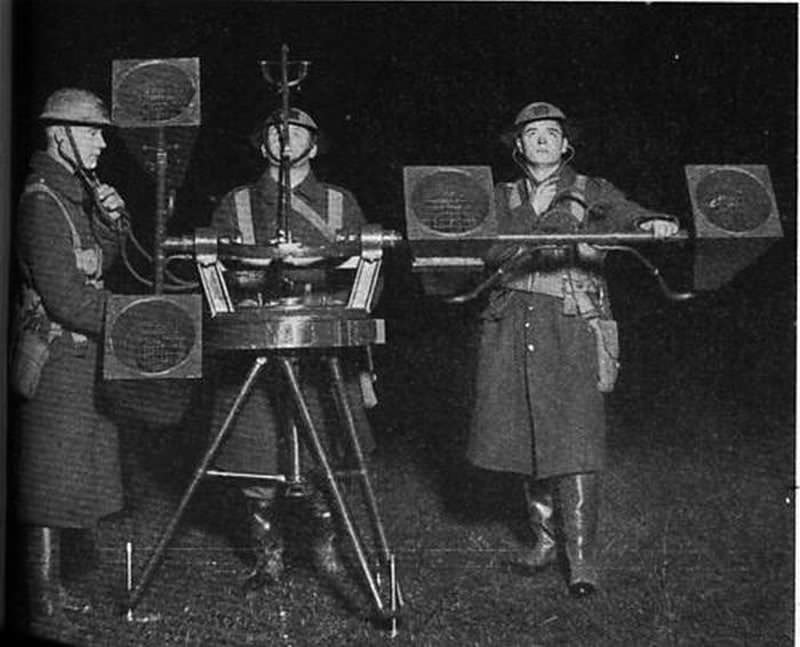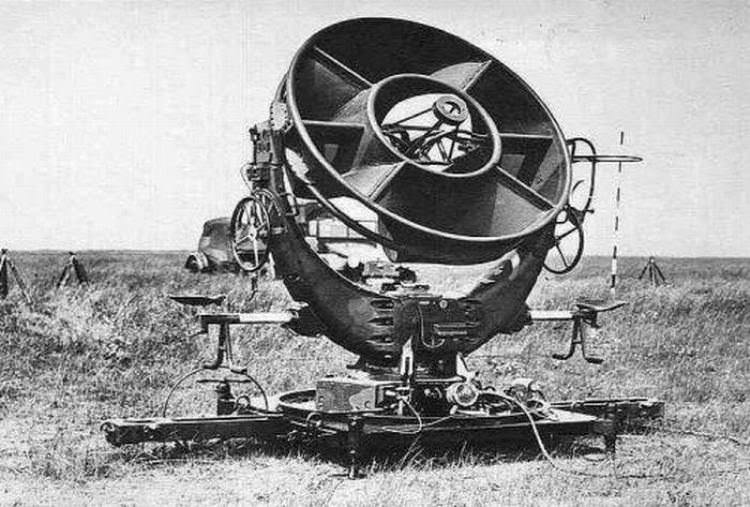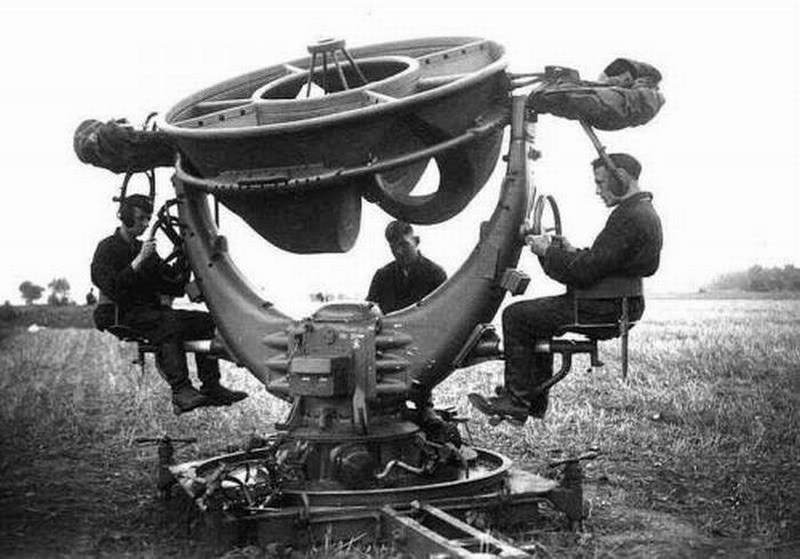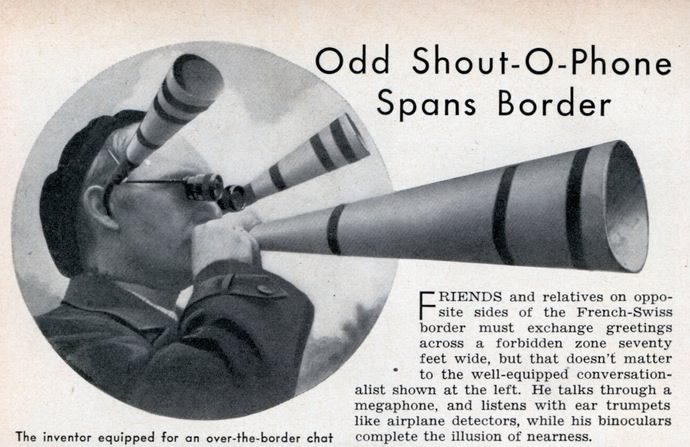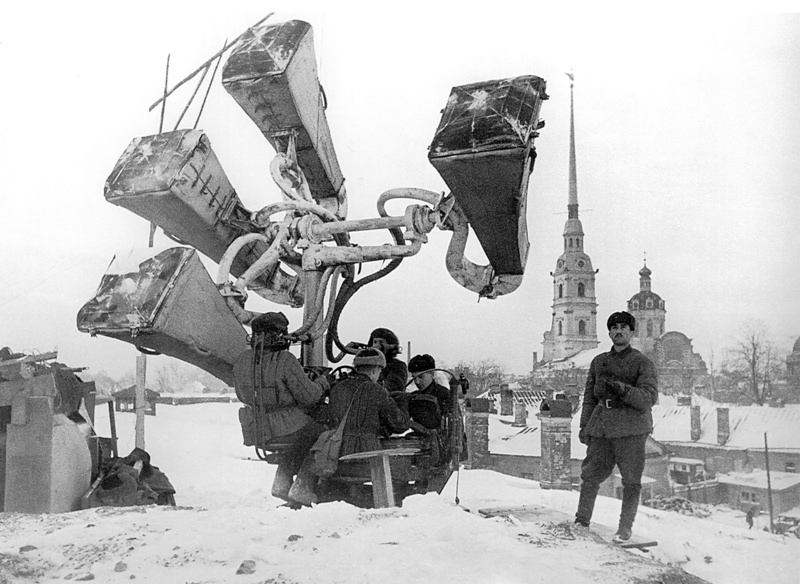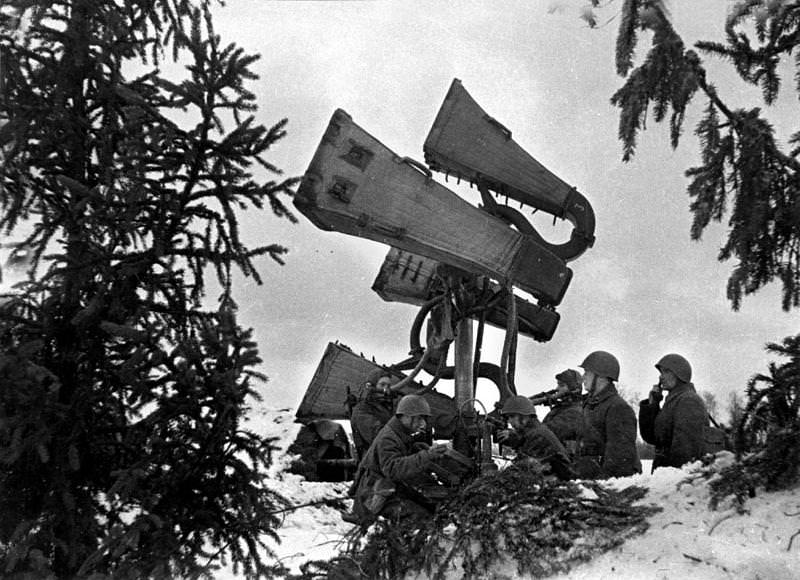Acoustic location systems are used to locate a sound source. These devices were used by military services from mid-WWI to the early years of WWII for the passive detection of approaching enemy aircraft by listening for the noise and vibrations of their engines. These devices consisted of giant acoustic horns or microphones connected to the operators’ ear using the stethoscope-type earphones. Acoustic locators could give some information about the approaching airships; however, the operators were unable to hear the distant sounds. Commander Alfred Rawlinson of the Royal Naval Volunteer used this equipment in 1916 when commanding a mobile anti-aircraft battery on the east coast of England. He needed to mean locating the Zeppelins during bad weather or cloudy conditions. Radars completely replaced these giant acoustic location systems.


